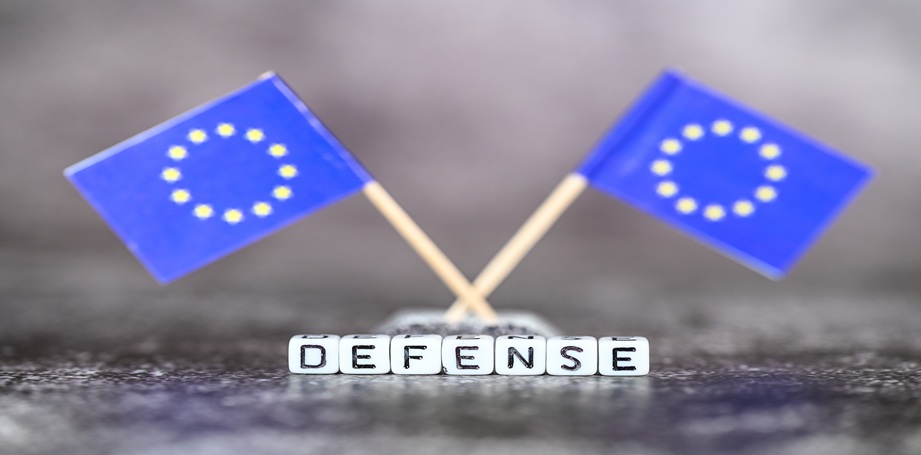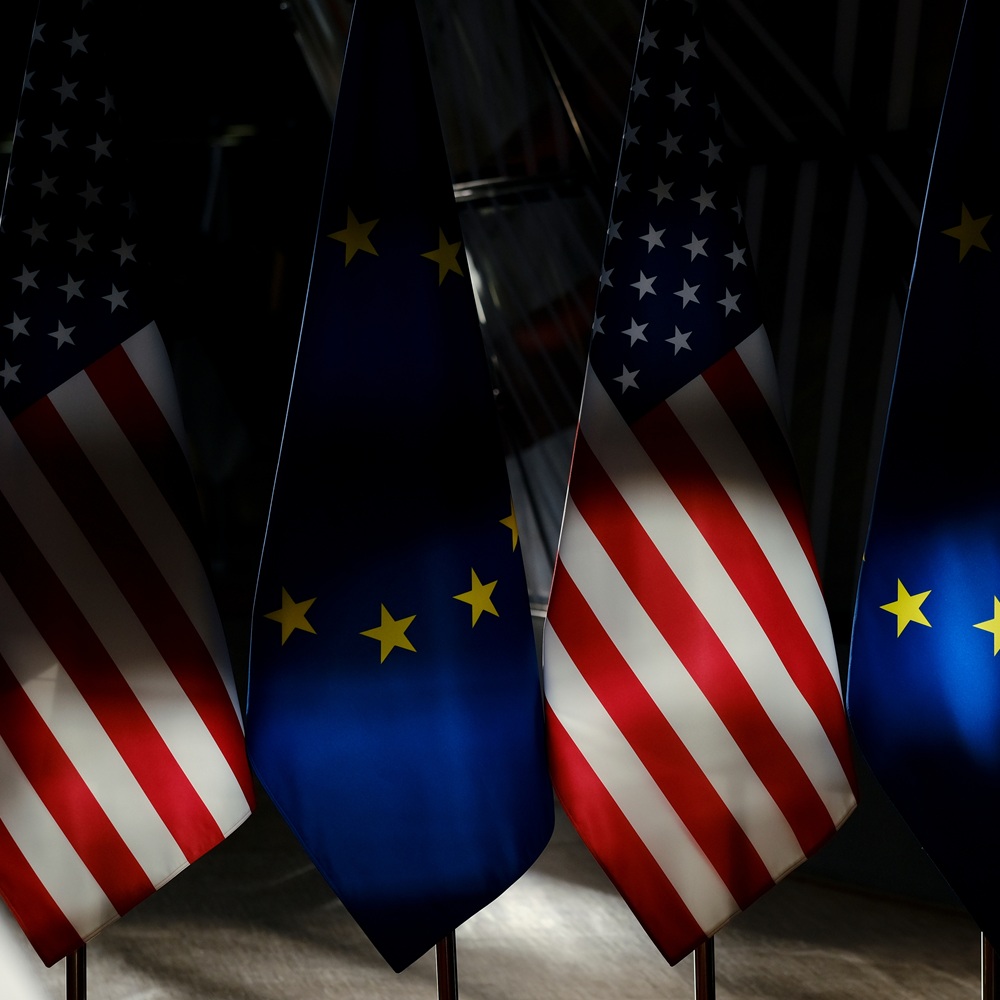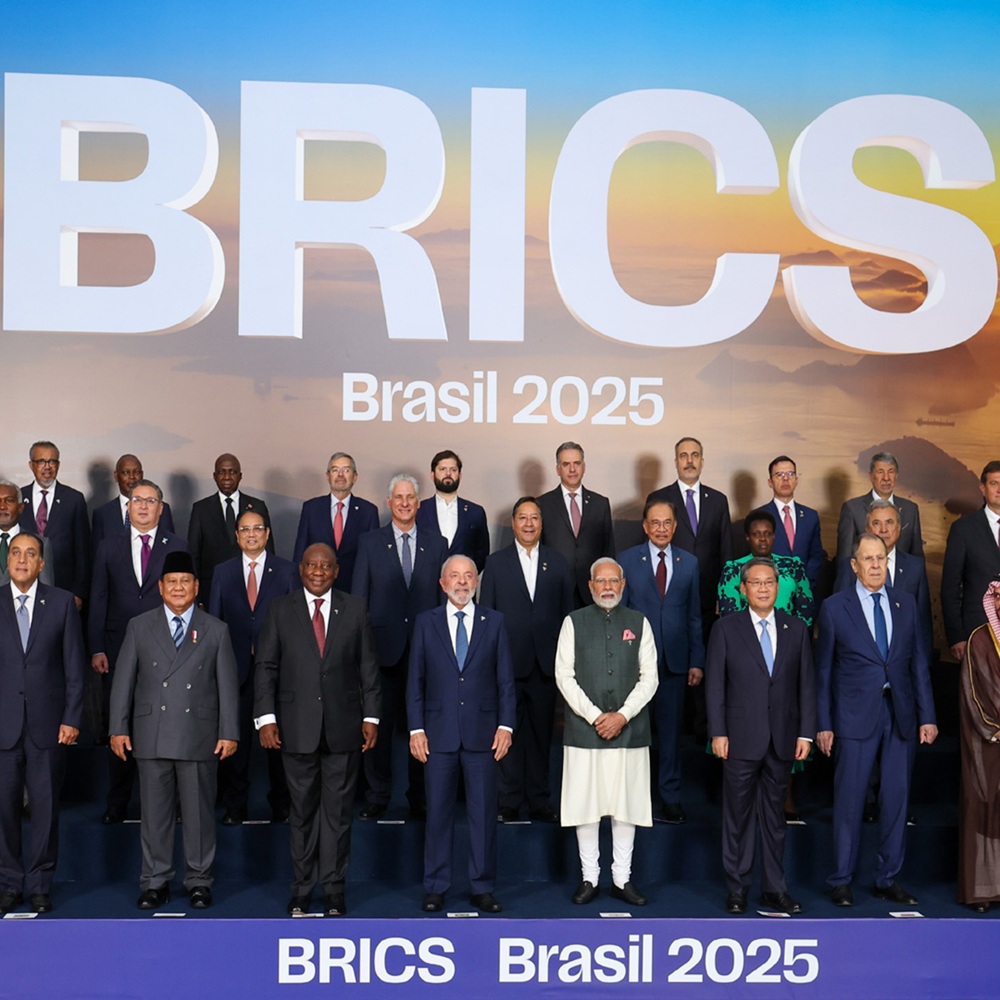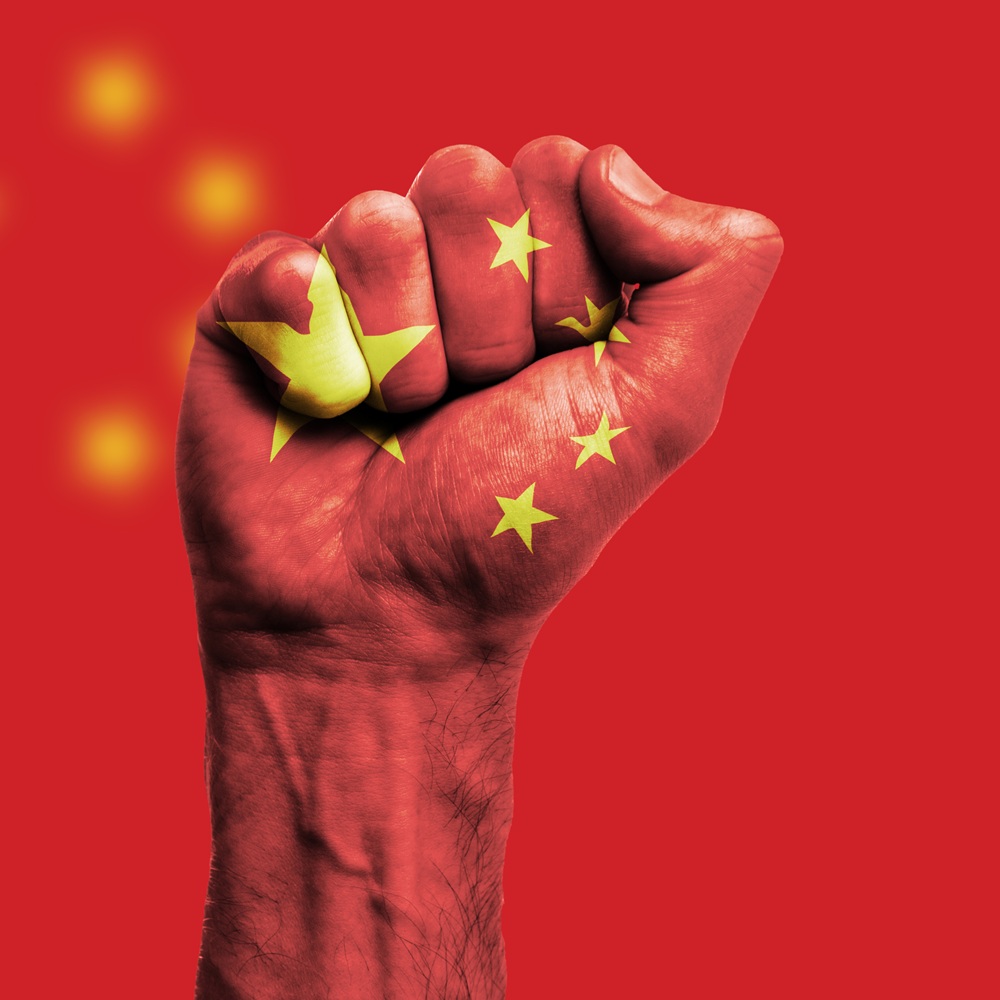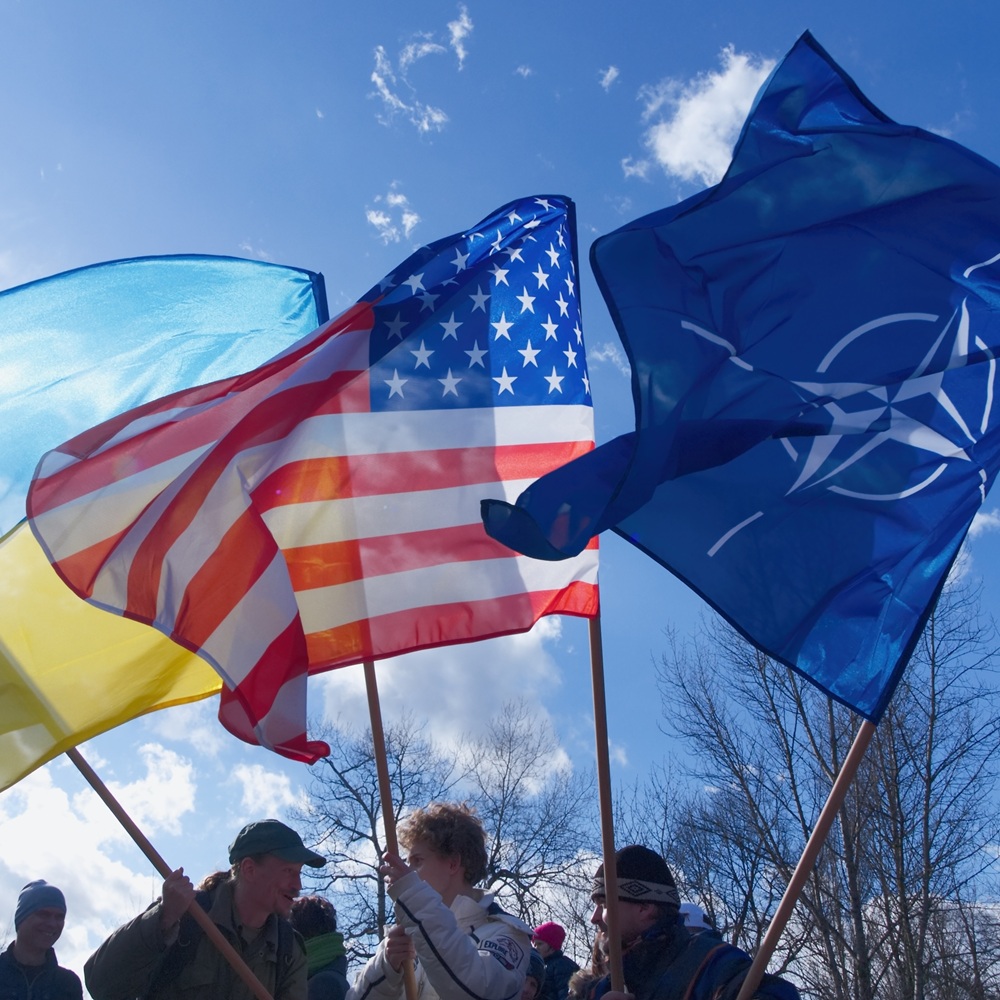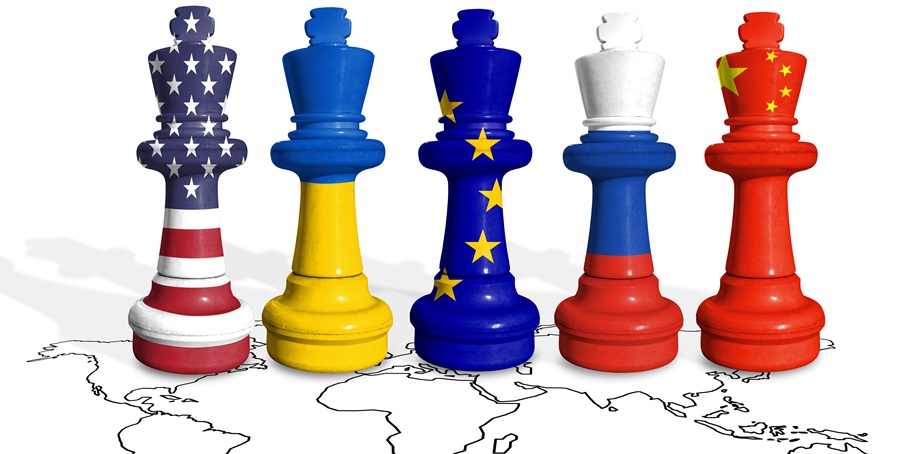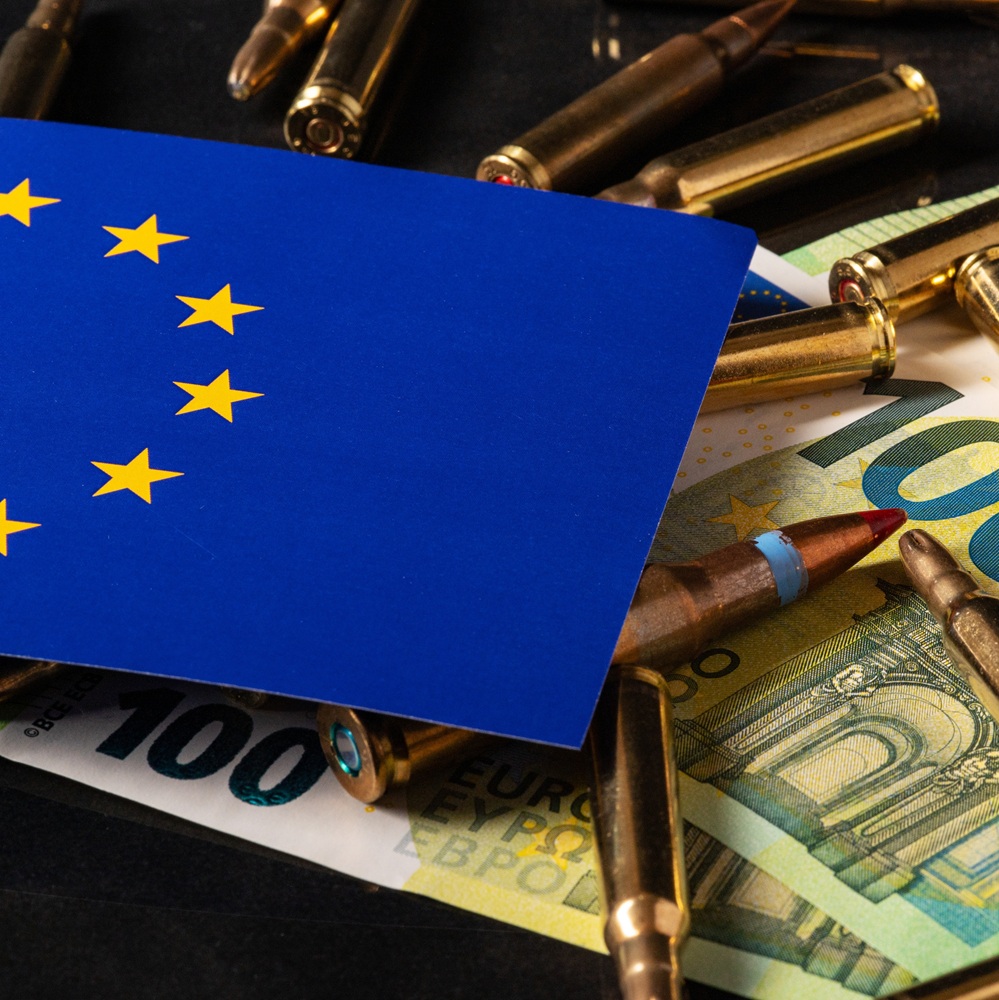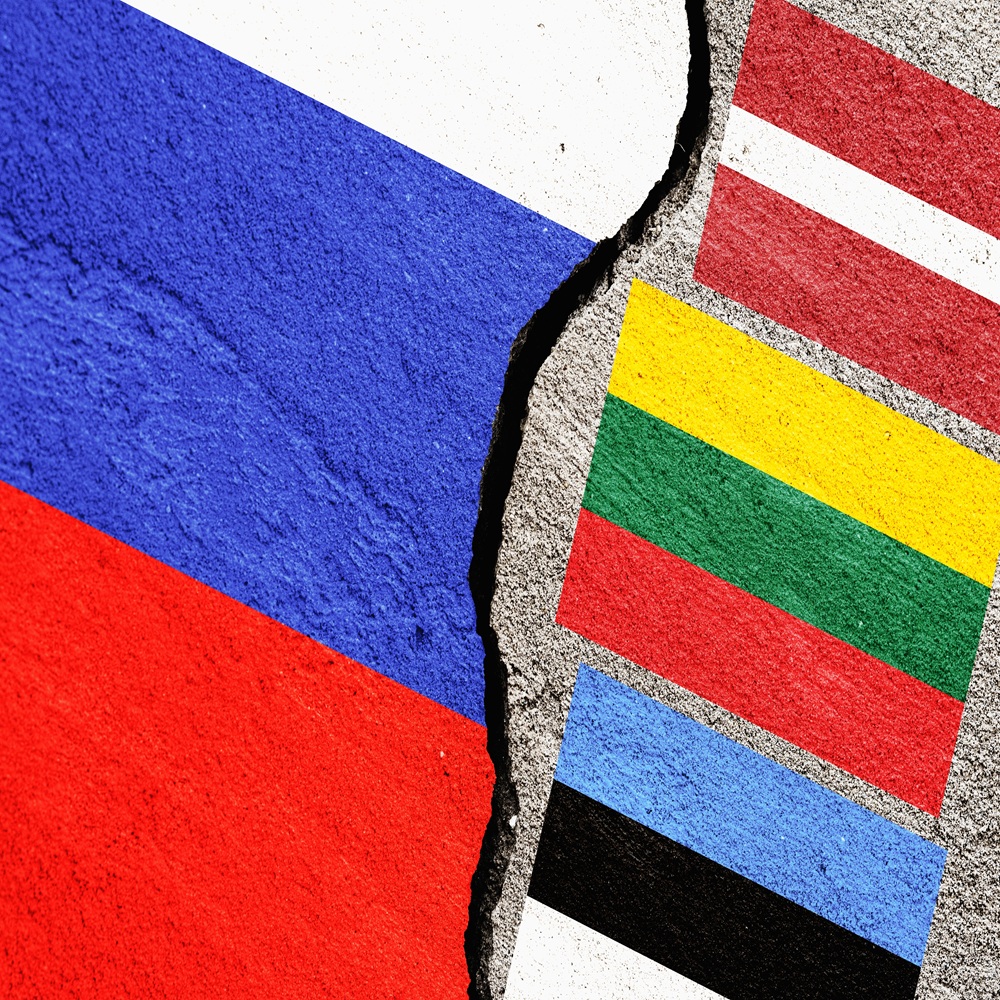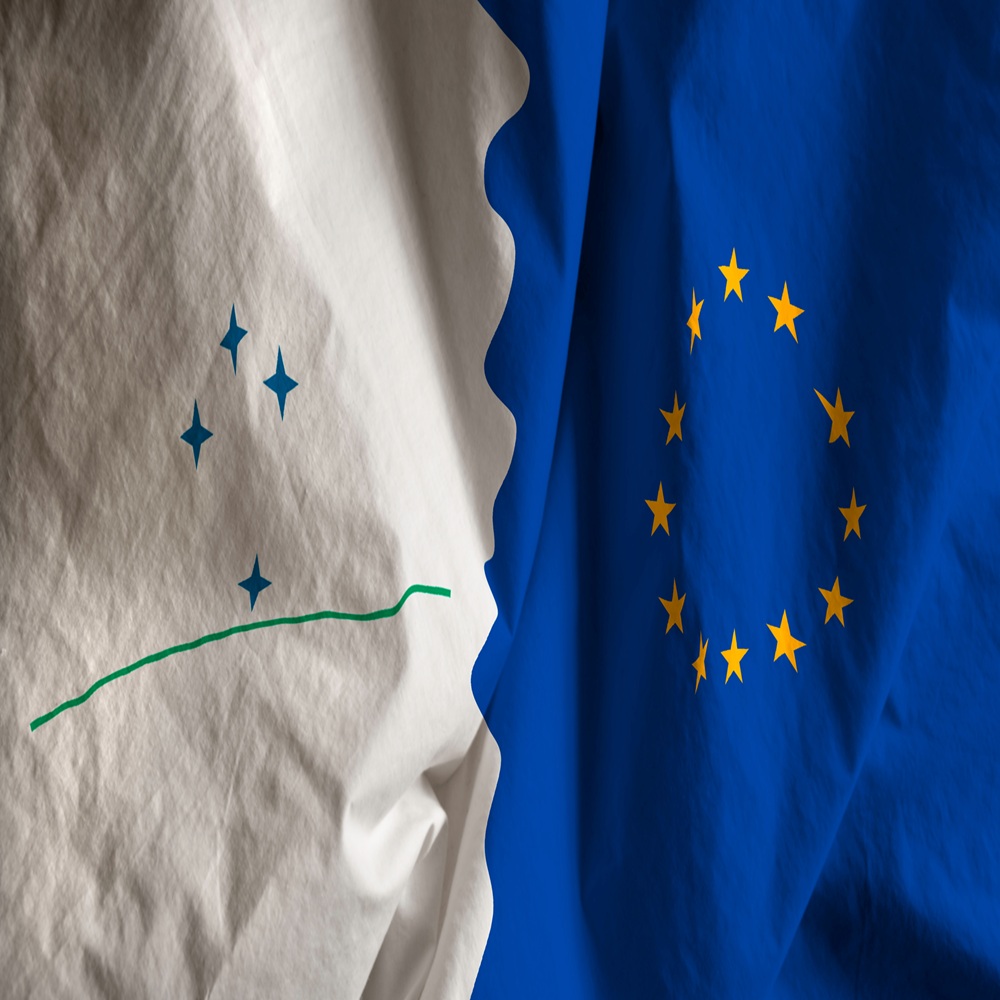
Economic integration and convergence in globalization: An analysis of the relations between Mercosur, the Pacific Alliance and the European Union
by Giuseppe Ciccone , Davide Galletti
Abstract Globalization has posed significant challenges for Latin American countries, prompting them to rethink their economic integration models. Mercosur and the Pacific Alliance, the two main regional blocs, have faced processes of economic and political convergence, albeit with different approaches: Mercosur, oriented towards protectionism, and the Pacific Alliance, which is committed to trade liberalization. In this context, the European Union emerges as a key player with which both blocs have sought to strengthen their economic relations, through strategic agreements such as the one signed in 2019, the Mercosur-EU free trade agreement. The article examines the dynamics of economic integration in Latin America, analyzing the structural divergences between the blocs and their capacity to face global challenges. In particular, it delves into the implications of the Mercosur-EU agreement, with special attention to economic impacts, sectoral cooperation opportunities and environmental challenges. The research also includes a case study on the implementation of the agreement and future prospects, complemented by an interview with the Consul of Uruguay to analyze the diplomatic position and prospects for the development of relations between Latin America and the European Union. The objective of this work is to explore how economic integration models can contribute to face global challenges, promote sustainable development and strengthen Latin America's competitiveness in the global scenario Introduction Global Context of Cooperation Between the European Union and Latin America Future cooperation between the European Union (EU) and the main Latin American trade blocs — Mercosur and the Pacific Alliance — is expected to focus on key areas such as sustainability, digitalization, and technological innovation. These sectors are essential for modernizing the involved economies and building a long-term partnership capable of addressing the economic, environmental, and geopolitical challenges of today’s global landscape. One of the main opportunities for cooperation lies in the circular economy. The EU promotes sustainable production and consumption models that aim to reduce waste and optimize resources. This approach paves the way for close collaboration with Latin American countries in waste management and reducing the environmental impact of industrial activities. The potential economic and labor impacts of this collaboration are significant, as it could create new opportunities for innovation and development in strategic sectors. At the same time, digitalization is emerging as a key pillar for the economic transformation of both regions. The EU’s Digital Alliance, for example, aims to strengthen Latin American economies by promoting connectivity, the development of digital skills, and the creation of new technological ecosystems. This effort also includes social inclusion initiatives, targeting vulnerable sectors such as informal workers and the elderly population, to reduce the digital divide and foster social inclusion. Another area of cooperation is maritime transport. The EU intends to invest in advanced and sustainable port infrastructure to improve operational efficiency and reduce the environmental impact of port activities. This initiative aligns with global sustainability goals and the EU’s broader strategy to promote environmentally responsible trade practices. However, cooperation between the EU and Latin American trade blocs also faces challenges. While the Pacific Alliance appears more inclined toward adopting advanced technologies, Mercosur faces significant structural reforms to close the technological gap among its members. Despite these hurdles, the EU is committed to supporting both regions, strengthening its role as an economic and political partner, and promoting a development model that integrates sustainability and inclusiveness. In this context, digitalization, economic modernization, and infrastructure diversification emerge as key elements to address global challenges. These factors are essential for promoting fair and inclusive development in both regions, creating a favorable environment for innovation and sustainable economic growth. The European Union considers Latin America as a strategic partner not only because of its natural resources but also due to shared values, such as the fight against climate change. Within this framework, the EU’s Green Deal and the environmental diplomacy play a crucial role in supporting ecological transition in the region, with a particular focus on renewable energy, the protection of the Amazon, and sustainable agricultural practices. Nevertheless, challenges remain, including the strong influence of traditional economic sectors like agribusiness and limited institutional capacity in some countries. Despite these issues, the EU is working to encourage the adoption of strict environmental standards through investments in sustainable projects and clean technologies, helping to reduce deforestation and improve biodiversity. The cooperation with the Pacific Alliance is particularly strong due to the region’s openness to sustainability, whereas Mercosur faces internal obstacles such as regulatory fragmentation and coordination difficulties among its members. Still, the EU continues to support initiatives in renewable energy, energy efficiency, and the bioeconomy, creating important economic opportunities for the region. Rising geopolitical competition, especially with China and the United States, is pushing the EU to strengthen its ties with Latin America by backing initiatives like the Global Gateway, which aims to promote sustainable and transparent infrastructure. Programs like “Horizon Europe” support scientific development in the region, while initiatives such as Erasmus+ encourage cultural exchange and the training of a new generation of professionals. The EU stands out for its integrated approach, aiming to promote a development model that combines economic growth, social inclusion, and environmental protection—seeking to overcome political and economic barriers and foster effective and mutually beneficial cooperation between the two regions. The main challenge remains translating these ambitions into concrete actions. The adoption of shared standards and the reduction of non-tariff barriers will be key elements in achieving fruitful cooperation. Despite the difficulties, EU–Latin America cooperation has the potential to lead the future toward sustainable and inclusive development, with positive effects on global policy, the ecological transition, and international trade. Methodology The methodology used in the preparation of this article combined extensive documentary research with the collection of primary data through direct interviews. First, documentary research served as the main foundation for analyzing the issues discussed, such as the environmental impacts and diplomatic challenges related to the Association Agreement between the European Union and Mercosur. To that end, official sources were consulted, including documents from the European Commission and reports from the European Parliament, which provide detailed data and analyses on the trade, environmental, and social aspects of the agreement. This phase of the research included a review of institutional reports, political resolutions, and other public documents available online, offering a comprehensive view of regulatory developments and the political positions adopted by European institutions and Mercosur countries. In addition to documentary research, a distinctive element of this work was an interview conducted with the General Consul of Uruguay in Spain, who provided a direct diplomatic perspective on the topic. The interview aimed to gather insights and information on the agreement negotiations from Mercosur’s point of view, exploring the political dynamics and diplomatic challenges associated with the understanding between the two blocs. The topics addressed during the interview focused on how Mercosur perceives the agreement in relation to its economic and environmental priorities, and on the measures being taken to balance development and sustainability within the framework of European policies. Finally, the research methodology was enhanced through the triangulation of information obtained by comparing data from official EU sources with the insights gathered from the interview. This approach enabled the development of a balanced and comprehensive view of the topics discussed. The combination of qualitative methods allowed for an in-depth analysis of the challenges and opportunities arising from the Mercosur–EU Agreement, as well as its social, economic, and environmental implications at the international level. Development Inside the Agreement The free trade agreement between Mercosur and the European Union, signed in 2019 after more than twenty years of negotiations, stands as one of the most ambitious examples of interregional cooperation. This treaty, which aims to create one of the largest free trade areas in the world, involves nearly 770 million people and accounts for around 25% of global Gross Domestic Product (GDP). The significance of the agreement is heightened by the current geopolitical context, marked by a rise in protectionist policies and the growing influence of China, making it crucial to strengthen ties between the two regional blocs (European Commission, 2019). Trade relations across both sides of the Atlantic are substantial. In the previous year, European exports to the four Mercosur countries amounted to €55.7 billion, while imports of goods totaled €53.8 billion. The roots of cooperation between the European Union and Mercosur go back to the 1990s, when the EU initiated a structured dialogue with Mercosur aimed at promoting trade liberalization, political dialogue, and cooperation in various sectors. The agreement signed in 2019 can be interpreted as a strategic response to increasing global protectionist pressures. However, the ratification process has been hindered by political disagreements, economic asymmetries, and concerns over potential environmental impacts, such as deforestation and pesticide use (López, 2020). The agreement has received support from several EU countries, including Germany, Spain, and Portugal, while others — such as France, Poland, and Ireland — have opposed it due to fears related to unfair competition and food safety. Specifically, the treaty could lead to increased imports of meat and other agricultural products from Mercosur, which raises concern among EU agricultural sectors. At the same time, Mercosur views the agreement as an opportunity to strengthen its international competitiveness and reduce its economic dependence on China and the United States (Pereira, 2021). The path to ratification, still ongoing, requires a lengthy legal process involving approvals by various national parliaments. If ratified, the agreement will help reduce tariffs and simplify customs procedures, benefiting strategic sectors such as industry, chemicals, and pharmaceuticals. However, ongoing disagreements among the involved countries continue to cast uncertainty over the future of the initiative (European Commission, 2019). The future of the free trade agreement between the European Union and Mercosur stands at a critical crossroads, facing the risk of a complete breakdown in negotiations or, alternatively, a "no-deal" scenario. However, between these two extreme outcomes, there are several intermediate solutions, which could include modifications to the treaty’s controversial points or even the possibility of granting a new mandate to the European Commission to renegotiate the agreement — either partially or entirely. Such modifications could lead to significant delays in the progress already made (Brito, 2021). The Portuguese presidency of the EU Council, which began on January 1, 2025, now faces a particularly complex situation as it attempts to steer the process toward a positive conclusion. Portuguese Foreign Minister Augusto Santos Silva has expressed his intent to accelerate the ratification process and promote the agreement’s entry into force. However, resistance from France, which fears negative impacts on its agricultural and livestock sectors, remains a major obstacle. Protests by French farmers, including demonstrations and road blockades, highlight internal difficulties within the European Union (Müller, 2020). Despite this opposition, the European Commission — backed by countries like Spain and Germany — continues to push for the agreement’s ratification, highlighting the enormous economic benefits for both parties. It is estimated that the agreement could result in a €15 billion increase in GDP for the European Union and €11.4 billion for the Mercosur countries. Moreover, the elimination of customs tariffs would boost European exports, particularly in sectors such as wine, alcoholic beverages, and dairy products. For the European Union, the agreement represents not only a strategic opportunity to expand trade with South America but also a mean to strengthen its economic security amid an unstable geopolitical context (European Commission, 2021). The deal is expected to create new commercial and employment opportunities with a positive impact on both regions’ economies. Particularly, it could attract sustainable investment into Mercosur, especially in high-tech sectors. Additionally, it would support the strengthening of supply chains and enhance the EU’s economic resilience, reinforcing strategic cooperation between the two regional blocs. However, the success of the agreement will depend on both parties’ ability to overcome existing differences, address environmental and human rights concerns, and implement effective monitoring mechanisms. On Mercosur’s side, it will be necessary to undertake economic reforms to enhance competitiveness, stimulate innovation, and attract foreign investment. Meanwhile, the European Union will face the challenge of gradually reducing agricultural subsidies to ensure fair competition (Pereira, 2021). In summary, the free trade agreement between the European Union and Mercosur represents a significant opportunity to strengthen economic cooperation between two blocs with complementary economies: the EU, a global leader in the industrial sector, and Mercosur, one of the main exporters of agricultural raw materials. The agreement aims to increase bilateral trade and direct investment, particularly in the agricultural and industrial sectors, with important implications for the future of interregional cooperation and global trade. The Association Agreement between the EU and Mercosur has raised serious concerns of both environmental and diplomatic nature. While designed to strengthen economic and political ties between the two blocs, the agreement could have devastating environmental impacts, especially considering Mercosur’s heavy reliance on agricultural exports to the EU. Brazil, the leading exporter of products like soy, beef, and coffee, stands as a clear example of these issues. The demand for these products is directly linked to deforestation, with severe consequences for vital ecosystems such as the Amazon. Although deforestation in Brazil decreased by 50% in 2023 compared to the previous year, future projections remain worrisome. The access to European markets, guaranteed by the agreement, could accelerate land conversion and intensify pressure on natural resources. Some studies estimate that the agreement could lead to the conversion of between 560 and 1,730 km² of land — an impact that, although lower than the 13,235 km² of annual deforestation recorded in the Brazilian Amazon in 2021, remains significant (FAO, 2021). A crucial chapter of the agreement is the “Trade and Sustainable Development Chapter” (TSDC), which promotes cooperation between the EU and Mercosur on environmental issues and establishes a commitment to adhere to international climate agreements, such as the Paris Agreement. However, criticism of the TSDC focuses on the lack of binding enforcement mechanisms for environmental regulations and the absence of adequate sanctions, which limits the agreement’s ability to ensure compliance with environmental commitments. Despite the creation of a joint committee to monitor the implementation of the TSDC, its effectiveness is weakened by the lack of concrete punitive tools (European Commission, 2020). The European Commission also highlights the value that Mercosur can bring in terms of agricultural and fishery products to the European market. Some of these goods — such as soy, cocoa, and coffee — are items that EU member states cannot produce or only produce in minimal quantities. Others, such as beef, poultry, honey, and cheese, compete directly with European agricultural businesses. This has fueled rural anger, particularly among French, Polish, and Italian farmers, who accuse the EU of promoting unfair competition, given that South American producers are not subject to the same regulations as their European counterparts. Concerns about increasing deforestation and the weakening of environmental and social standards are among the primary fears expressed by environmental groups and certain EU member states. During Jair Bolsonaro’s presidency (2019–2022), environmental policies were significantly rolled back, exacerbating these concerns. However, the election of Luiz Inácio Lula da Silva has raised new hopes for a renewed commitment to environmental protection, although economic priorities may complicate the negotiation process (Doyle, 2023). Despite the criticisms, the agreement presents an opportunity to promote the sustainable management of natural resources, enhance transparency in production chains, and strengthen the enforcement of environmental laws in Mercosur countries. To achieve a positive and lasting impact, however, concrete commitment from both governments and the private sector will be essential, supported by effective monitoring mechanisms and enforceable sanctions. An innovative aspect of the agreement is the inclusion of clauses that mandate the end of illegal deforestation by 2030, with a monitoring system designed to ensure compliance with these rules. Although this commitment represents an important step forward, doubts remain about its enforcement and effective oversight — particularly regarding Brazil’s compliance, given its central role in deforestation. Additionally, the agreement stipulates that only “deforestation-free” products — such as soy, beef, palm oil, and cocoa — will be allowed to enter the EU market (European Commission, 2022). Concerns related to food safety and public health are equally relevant. The importation of beef from countries where the use of antibiotics and hormones is less regulated could compromise food safety in Europe, as highlighted by an audit conducted by the European Commission. Some critics fear that the agreement may lower product quality standards and increase unfair competition for European farmers. Furthermore, there is concern that the deal could encourage industrial relocation to South America, resulting in job losses in Europe (OECD, 2021). Despite these challenges, the agreement represents a rare opportunity to strengthen interregional relations between the EU and Mercosur in the face of global challenges such as climate change and biodiversity protection. However, the success of the agreement will depend on the ability of both regions to effectively integrate economic interests with the need for social and environmental sustainability. It will be necessary to adopt strict measures to monitor the environmental and social impacts of the agreement, actively involve local communities in policymaking, and promote a development model that balances economic growth with sustainability. To further explore the issues affecting Mercosur and potential solutions for greater regional integration, we interviewed Ramiro Rodríguez Bausero, General Consul of Uruguay in Spain. During the conversation, Bausero shared his perspective on the economic and political challenges that face the bloc, as well as on the opportunities for cooperation with the Pacific Alliance and the policies needed to address emerging global problems such as climate change and food security. Below are some key excerpts from the interview, along with a commentary on how these insights contribute to a deeper understanding of the challenges and opportunities facing Mercosur in a global context. To better understand the issues influencing Mercosur, it is essential to examine the internal challenges and asymmetries among its members. According to Ramiro Rodríguez Bausero, General Consul of Uruguay in Spain, “Mercosur displays significant disparities in terms of size and level of development; there are evident inequalities between countries and regions, and these persist over time.” This observation highlights one of the core difficulties in achieving economic integration within the bloc: the economic disparities between its larger and smaller members. Resources and investments are unevenly distributed, and the inability to effectively manage these asymmetries hinders balanced growth, with larger countries often dominating the economic process. This concept is fundamental to understanding the structural limitations that constrain Mercosur’s development. Another crucial aspect is the influence of ideological orientation on the integration processes. Bausero notes that “within the bloc, different visions coexist, based on internal productive structures, and as governments change, their profiles evolve toward more or less protectionist/open policies, depending on the ideological orientation of each administration.” This phenomenon poses a major obstacle to strengthening Mercosur, as the swings between protectionist and open-market policies make it difficult to establish a coherent and long-term strategy. Ideological differences between governments further complicate the formation of a stable and strategic economic bloc. Nevertheless, despite internal challenges, there are significant opportunities for cooperation with other regional entities such as the Pacific Alliance. Bausero highlights that “strengthening ties between the two blocs presents several areas with the potential for cooperation, such as trade facilitation, reciprocal investment, physical integration, technological innovation, and the movement of people.” Although political divergences may hinder closer cooperation, these mutual areas of interest could reinforce regional integration, especially in fields like trade and technological innovation. On the environmental sustainability and climate change front, Bausero suggested that “Mercosur could implement more ambitious climate policies, promoting a transition to a low-carbon economy with measures that support renewable energy and encourage technological innovation in sustainable industries.” Adopting more advanced climate policies represents an opportunity for Mercosur to address global climate challenges. Given its significant influence over agricultural policies and natural resource management, the bloc could play a crucial role in driving the shift toward a green economy — responding to international pressure and improving its reputation as a responsible global actor. The trade potential of Mercosur, especially in the context of the agreement with the European Union, is another key issue. Bausero emphasized that “the benefits of the trade component of the Agreement show that many of the goods comprising Mercosur countries’ export offerings to the EU will receive preferential treatment in the European market.” This agreement could create new opportunities for economic growth among member countries, reducing their dependence on Asian markets — particularly China. However, internal challenges related to the agreement, especially concerning the agricultural sector, could hinder full implementation and require careful attention. Finally, reforming Mercosur has emerged as a relevant topic, with some countries, like Uruguay, advocating for a more flexible bloc. Bausero stated: “Some countries (such as Uruguay) have argued for the need to make the bloc more flexible, transforming it into a Free Trade Area (FTA), allowing each member to pursue its own international agenda, including negotiating agreements with third countries.” The proposal to transform Mercosur into a more flexible FTA reflects criticism of the bloc's rigidity. If implemented, such a reform could allow member states to adopt more individualized policies — but it also raises questions about the future of regional integration and the political and economic unity of the bloc. Another important area of development is digital cooperation and infrastructure. According to Bausero, “the so-called ‘Digital Mercosur’ is a cooperation project between the EU and Mercosur, aimed at reducing technological asymmetries and promoting common policies and strategies in the fields of the Information Society, e-commerce, and human resource training.” Digital cooperation could be one of the main drivers of growth for Mercosur, enabling member countries to overcome technological inequalities and access global markets. Digitalization and the integration of modern technologies are essential to enhancing regional competitiveness and developing an interconnected digital economy. Conclusions The free trade agreement between Mercosur and the European Union, signed in 2019, represents a significant step toward greater interregional economic integration, with the ambitious goal of creating one of the largest free trade areas in the world. However, its future remains uncertain and depends on a series of interrelated factors, including internal political divergences within the EU, environmental challenges, and economic inequalities among Mercosur members. These elements raise numerous questions and opportunities for critical reflection that could be explored in future research. First and foremost, one of the main issues to address is the environmental impact of the treaty. The "Trade and Sustainable Development Chapter" (TSDC), while establishing a commitment to international climate agreements, does not provide sufficiently binding mechanisms to ensure effective environmental protection. What is the role of trade policy in a context of growing urgency for environmental sustainability? To what extent can the current provisions halt deforestation and guarantee the sustainable use of natural resources, especially in countries like Brazil, where agricultural expansion is directly linked to ecosystem destruction? These questions could pave the way for deeper research into the monitoring and effectiveness of environmental policies within trade agreements. Another relevant issue is the question of economic asymmetries within Mercosur. The disparities among member countries, in terms of size and development level, pose a challenge to genuine economic integration. How can smaller Mercosur countries compete on equal footing with larger ones without compromising their competitiveness? Furthermore, how can it be ensured that the benefits of the agreement are more equitably distributed among the bloc's members? Answering these questions is crucial for implementing policies that promote balanced and inclusive development. The geopolitical context also plays a fundamental role. In a scenario where protectionist trends are on the rise and China's influence continues to grow, how might the agreement between the EU and Mercosur redefine trade and geopolitical relations between the two blocs? Could this agreement represent the beginning of a reorganization in global economic balances, reducing dependence on Asian markets and strengthening ties between Europe and Latin America? These questions invite a deeper analysis of the geopolitical implications of the treaty and its influence on global trade dynamics. Additionally, the proposal to reform Mercosur — advocating for greater flexibility by transforming it into a Free Trade Area (FTA) — raises important questions. How would such a reform affect the bloc’s political and economic cohesion? Would flexibility be the right approach to addressing internal differences, or could it instead lead to the fragmentation of Mercosur and undermine its ability to act as a unified player on the international stage? Finally, digital cooperation, particularly the "Digital Mercosur" project, could become one of the most promising areas of development. How could digitalization and technological cooperation between the EU and Mercosur help reduce technological disparities and promote the competitiveness of the Latin American bloc? Strengthening digital infrastructure could accelerate Mercosur’s economic growth and open new trade opportunities, but what political and technological challenges will arise in this digitalization process? In conclusion, the free trade agreement between the European Union and Mercosur represents a significant opportunity, but it also poses a range of challenges that require ongoing attention. The questions raised by this agreement— from environmental concerns and economic asymmetries to geopolitical dynamics and structural reforms within Mercosur — offer numerous starting points for future research. The ability of both regions to effectively integrate economic interests with the demands of social and environmental sustainability will be key to the long-term success and viability of the agreement. Bibliographic References Agenzia del Brasile. (2017, April 7). El MERCOSUR y la Alianza del Pacífico quieren expandir el comercio en América del Sur. https://www.gob.mx/cms/uploads/attachment/file/349593/DECLARACION_AP_MERCOSUR.pdfAlianza del Pacífico. (n.d.). El poder de la integración. https://alianzapacifico.net/en/Alianza del Pacífico. (n.d.). La Alianza del Pacífico y el Mercosur avanzan en materia de facilitación de comercio. https://alianzapacifico.net/alianza-del-pacifico-y-mercosur-avanzan-en-materia-de-facilitacion-de-comercio/Alianza del Pacífico. (n.d.). Mujeres de la Alianza del Pacífico y el Mercosur son capacitadas para la era digital. https://alianzapacifico.net/alianza-del-pacifico-y-mercosur-avanzan-en-materia-de-facilitacion-de-comercio/Avvenire. (2024, December 6). Acuerdo UE-MERCOSUR: ¿qué prevé? https://www.avvenire.it/economia/pagine/accordo-eu-mercosur-cosa-prevedeBaltensperger, M., & Dadush, U. (2019). The European Union-Mercosur Free Trade Agreement: Prospects and Risks. Bruegel Policy Contribution, No. 11. Brussels: Bruegel.Basco, A., Ramos, P., & Rozemberg, R. (2024). Going Green: A New Trade Agenda for Latin America and the Caribbean. Integration & Trade Journal, No. 49, mayo 2024. Banco Interamericano de Desarrollo.Bressan, R. N., & Luciano, B. T. (2018a). La Comunidad Andina en el siglo XXI: entre bolivarianos y la Alianza del Pacífico*. Revista de Sociología e Política, 26, 62–80.Bressan, R. N., & Luciano, B. T. (2018b). La Alianza del Pacífico como un actor regional. En E. Pastrana Buelvas & A. Ripoll (Eds.), La Alianza del Pacífico: atrapada en el péndulo del regionalismo e interregionalismo? (Vol. 1, 22 ed., pp. 173–186). Fundación Konrad Adenauer México.Bressan, R. N., & Borba Gonçalves, J. D. S. (2023). La convergencia entre la Alianza del Pacífico y el Mercosur: avances, estancamientos y desafíos contemporáneos. Política Latinoamericana, 14, 167–183. https:// doi.org/10.1111/lamp.12291Busso, A., & Zelicovich, J. (2016). El gobierno de Mauricio Macri y la integración regional: ¿del MERCOSUR a la Alianza del Pacífico? Coyuntura Austral, 7(37), 17–24.Clemente Batalla, I., López Burian, C., & Telias, D. (2015). *Uruguay y la Alianza del Pacífico: ¿repensar el modelo de inserción internacional? Cuadernos sobre Relaciones Internacionales, Regionalismo y Desarrollo, 10(19), 23–46.CELAC. (2018). La convergencia entre la Alianza del Pacífico y el MERCOSUR: enfrentar juntos un escenario mundial desafiante. http://hdl.handle. net/11362/43614Comisión Europea. (2019). Acuerdo de asociación entre la Unión Europea y el MERCOSUR. https://ec.europa. eu/info/food-farming-fisheries/sustainability/strategy-eu-2019-2024_enDaniels, C. (2015). The Pacific Alliance and Its Effect on Latin America: Must a Continental Divide be the Cost of a Pacific Alliance Success? Loyola of Los Angeles International and Comparative Law Review, 37(2), 153-189.El País. (2024, 5 de diciembre). Bruselas acelera para cerrar esta semana el acuerdo comercial con Mercosur a pesar del rechazo de Francia. https://elpais.com/ internacional/2024-12-05/la-comision-acelera-para-cerrar-el-acuerdo-comercial-con-mercosur-pese-al-rechazo-de-francia.htmlEuractiv. (2024, 6 de diciembre). Acuerdo UE-Mercosur: entre polémicas, oportunidades y protección del sector agrícola. https://euractiv.it/section/comercio-ed-economia-mondiale/news/accordo-ue-mercosur-tra-polemiche-opportunita-e-tutela-del-settore-agricolo/Euronews. (2024, 19 de noviembre). Acuerdo comercial UE-Mercosur: ¿quién ganaría y quién no? https://it.euronews.com/business/2024/11/19/accordo-commerciale-ue-mercosur-chi-ci-guadagnerebbe-e-chi-noFélix Peña. (2022). Asesor y miembro del grupo de asesoramiento del Programa Hemisférico de Comercio Internacional e Integración Regional en el IICA.Gallegos, J. (2021). Antagonismo, convergencia y letargo: la relación de la Alianza del Pacífico y el Mercosur. En S. C. Negro & L. Klein Vieira (Eds.), Mercosul 30 Años: Pasado, Presente y Futuro (pp. 199–218). https://www.researchgate.net/publication/354132133Gardini, G. L. (2023). La redefinición de la presencia de la UE en América Latina y el Caribe. Peter Lang.Ghiotto, L., & Echaide, J. (2019). Análisis del Acuerdo entre la Unión Europea y el Mercosur. PowerShift e.V., Berlín.Giacalone, R. (2022). Valores en la convergencia de la Unión Europea-Latinoamérica y Mercosur-Alianza del Pacífico: ¿los valores compartidos de Europa promueven la convergencia? De Europa, 5(1), 81-100.Le Monde. (2024, 16 de noviembre). UE-Mercosur: pourquoi les Français s'opposent à l'accord de libre-échangeLlairó, M. D. M. (2019). Los nuevos desafíos y ejes de poder de la integración latinoamericana: la dualidad MERCOSUR-Alianza del Pacífico (2010–2017). Anuario Latinoamericano – Ciencias Políticas y Relaciones Internacionales, 7, 111.Mercosur. (2021). XXVII Reunión Extraordinaria de la comisión administradora del Ace n. 35 Mercosur–Chile. https://documentos.mercosur.int/simfiles/docreuniones/88802_ACE35_2021_ACTA01_ES.pdfNicole Gorton & Elena Ianchovichina. (2021). Economistas en el Banco Mundial que trabajan en la eficiencia espacial de las redes comerciales en América Latina, evaluando el potencial para mejoras infraestructurales dentro de MERCOSUR y la Comunidad Andina.OECD. (2024). Disponible en. https://www.oecd.org.Palmieri, R., Amice, C., Amato, M., & Verneau, F. (2024). Beyond the Finish Line: Sustainability Hurdles in the EU–Mercosur Free Trade Agreement. Social Sciences, 13(362).Sanguinet, E. R., & Alvim, A. M. (2024). The Effects of the EU-MERCOSUR Agreement on Bilateral Trade: The Role of Brexit. International Economics and Economic Policy, 21, 227–249.Sekulić, T. (2020). The European Union and the Paradox of Enlargement: The Complex Accession of the Western Balkans. Berlín y Heidelberg: Springer Nature.Tales Henrique Nascimento Simoes. (2024). Doctorando en Geografía en la Universidad de São Paulo, Brasil, se ocupa de los desafíos geopolíticos y de integración de MERCOSUR, con particular atención a las dinámicas de conflicto y cooperación en Sudamérica. Velasco e Cruz, S. C. (2022). International Order? Inter-American Relations and Political Outlook for Latin America. En Contributions to International Relations. Cham: Springer.Zaldívar, P. M. (2024). La Relación Histórico-Cultural entre España y Latinoamérica: Clave para Potenciar la Política Exterior de la Unión Europea en América Latina. Universidad Autónoma de Madrid.Revista Política Internacional | Volumen VII Nro. 2 abril-junio de 2025. https://doi.org/10.5281/zenodo.15103813This is an open access article distributed under the terms of the Creative Commons Attribution-NonCommercial 4.0 International License (CC BY-NC 4.0). The opinions and contents of the published documents are solely the responsibility of their authors.









